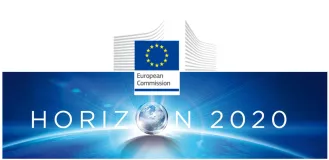RENAISSANCE
Relevant project information
Dates
Project website
Role of CIRCE
Grant agreement number
Funded by

Description and objectives
Currently, 83% of the energy consumed comes from non-renewable sources and most of it is generated outside the community where it is consumed.
This is because the energy grid has historically been designed for centralized production of stable energy sources such as nuclear and coal.
This approach has been under pressure as it contributes significantly to GHG emissions, as well as being inherently inefficient and costly in power transmission and distribution.
In Europe, the ambition is to transform the energy system to be more consumer-centric, as well as having the potential to be cleaner. Supporting the Climate-Energy targets, 271% of energy consumption should come from renewable energy (RES) by 2030, and a 40% reduction of GHGs compared to 1990 levels.
A main approach for that is the development of integrated local energy systems (LES), driven by local energy communities (LECs) and other organizational forms. LESs could tap into local renewable sources and be tailored to specific demand for heating and cooling, electricity and transportation.
The goal of RENAISSANCE is to demonstrate an easily replicable approach to designing and operating integrated local energy systems that have a high and stable level of social acceptability.
Value proposition
The project will demonstrate local energy systems that meet or exceed the EU target of 27% RES through energy sources, at equal or lower energy cost compared to current solutions, and reach a critical mass of 15-20% participation of citizens and businesses.
The project will support industry leaders ABB and ATOS to provide services with clear market approaches, widely replicable in Europe.
A set of tools will be demonstrated in real pilot tests in several countries (BE, GR, ES, NL). Both the methodology and each of the pilots will cover key energy vectors (electricity, heat, transport), involve actors (housing, SMEs, institutions) and valorize the flexibility of services in and between communities together with DSOs (distribution managers).
In total, more than 1000 homes and companies will be connected in a system with more than 30,000 Mw of capacity. Key innovations include:
- Multi-criteria and multi-actor technical design analysis
- Geolocation
- Interoperable management platform
To demonstrate replicability, the approach will be applied to 10 or more locations across the world, including India, the US, UK and Poland.
CIRCE collaborates by working on business case benchmarking, smart contract development and validation of energy agreements and business cases.
In addition, within the infrastructure integration and implementation work package, led by CERTH, CIRCE contributes in all tasks, with a special focus on the RENAISSANCE security access control network and the integration and interconnection phase. Other minor contributions are related to support in data collection, benchmarking, validation and C2C negotiation.
Project partners
VUB, ABB, CIRCE, ATOS, BAX & COMPNAY, DEEPBLUE, DEMOCRITUS UNIVERSITY OF THRACE, CERTH, CPERI, GEMEENTEE EEMNES, HELLENIC INSTITUTE OF TRANSPORT CERTH / HIT, INFORMATION TECHNOLOGIES INSTITUTE, IKERLAN, MANZANEDA, NAPE, NNT DATA, SDM ELEKTRO, SUNAMP


